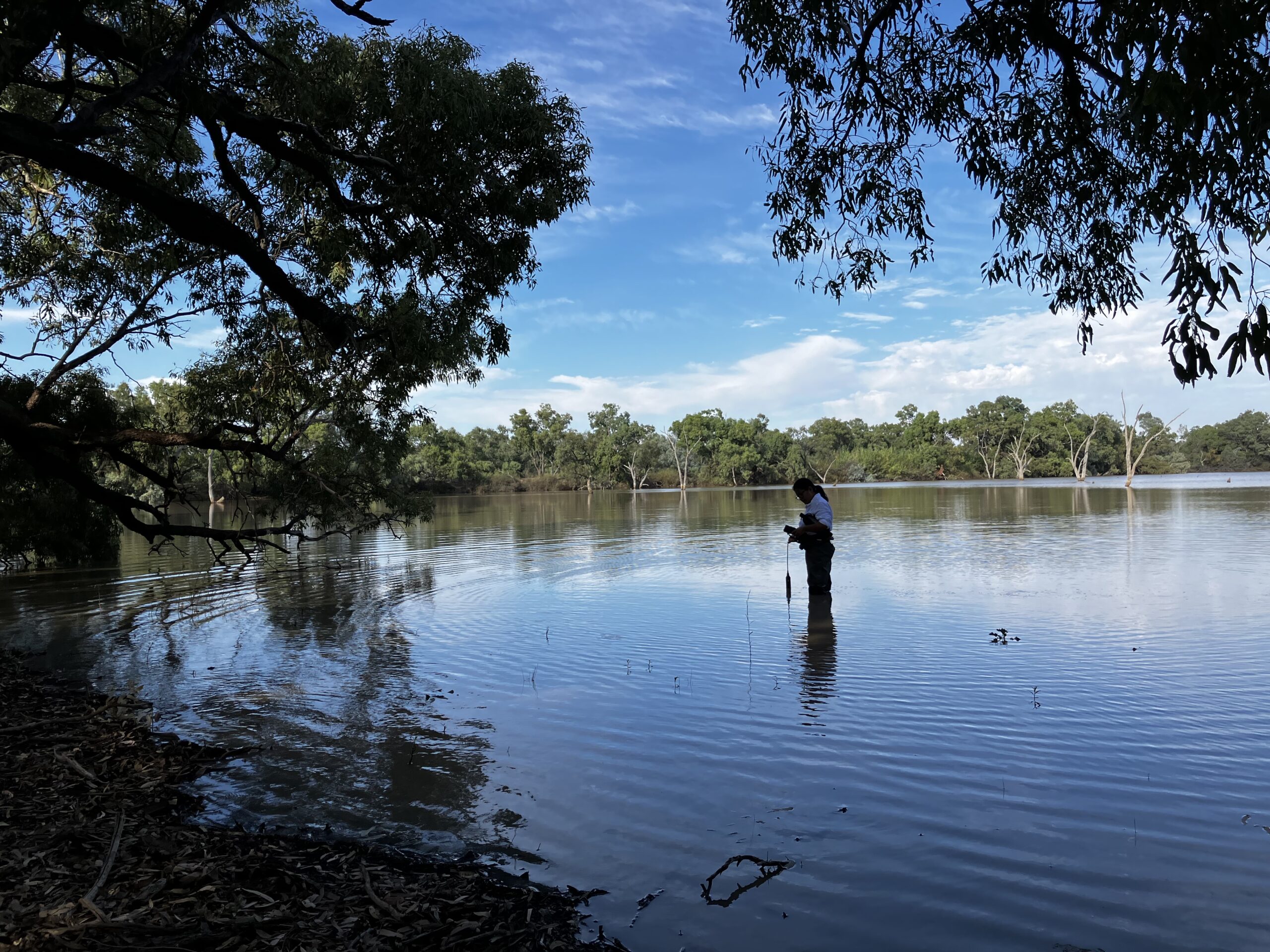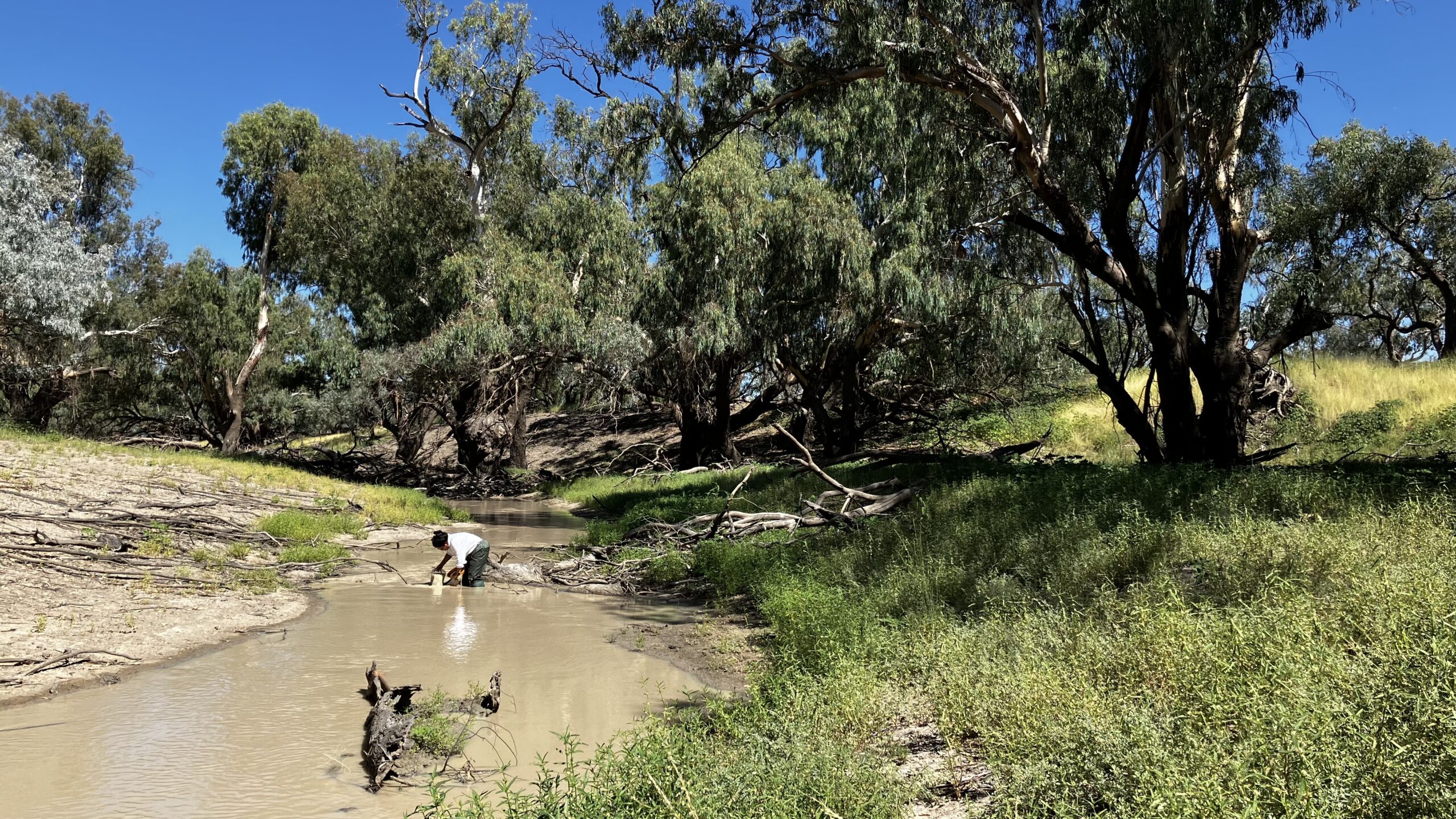Traditional Paakantyi Language of the Kurnu-Baakandji nation used in this article. (L. A. Hercus – Paakantyi Dictionary).
The Commonwealth Environmental Water Holder’s (CEWH) Science Program funds the Flow Monitoring, Evaluation and Research (Flow–MER).
Written by Manisha Shakya.

As an environmental research scientist at the Aquatic Ecology Lab, University of New England, I recently embarked on a field trip to the junction of the Warriku (Warrego) and Baaka (Darling) Rivers Selected Area. This expedition was a part of our regular monitoring program under the Flow Monitoring, Evaluation and Research project, focusing on water quality monitoring and macroinvertebrate sample collection. As someone hailing from Nepal, this experience offered me a whole new world to discover, from the diverse landscape and vegetation to the captivating wildlife and dynamic river systems (Figure 1). This story recounts the awe-inspiring journey that
allowed me to connect with nature and gain valuable scientific insights.
Stepping into the Toorale National Park was like stepping into a different dimension. The landscape, starkly different from the towering peaks of Nepal, presented a vast and flat expanse that seemed to stretch endlessly. This flatness gave the surroundings a unique charm, allowing me to appreciate the subtle beauty of the region. The stark contrast in geography between my home country and this Australian land was a reminder of the incredible diversity that our planet holds (Figure 2).

One of the most enchanting aspects of this field trip was encountering the Australian wildlife in their natural habitat. The first time I laid eyes on an emu (yarrantatya, Dromaius novaehollandiae) and kangaroo (thalta, Macropus rufus) in the wild, my heart skipped a beat. The graceful and swift movements of these iconic creatures left me captivated, and I found myself reaching for my camera instinctively, hoping to capture these precious moments. Every sighting was a treasure, reminding me of the inherent beauty of the natural world.
Being an aquatic ecologist, I was particularly fascinated by the changes in the river
systems. Our sampling sites in the Warriku and Baaka Rivers were like dynamic canvases, constantly transforming due to the ebb and flow of nature (Figure 3). Witnessing the impact of flood (thuulpa) and drought on these waterways was both astonishing and humbling. The once tranquil rivers turned into raging torrents during periods of heavy rainfall, reshaping the surrounding landscape and influencing the diversity of aquatic organisms. Conversely, during times of drought, the rivers dwindled, leaving behind isolated pools teeming with resilient species. These observations reinforced the intricate relationship between water availability and the health of the ecosystem.

Amidst our scientific endeavors, I couldn’t help but feel a profound sense of gratitude for the opportunity to explore this new environment. Collecting water and macroinvertebrate samples became more than just a research task; it became a means to connect with nature on a personal level. Every trip to this site was filled with a sense of wonder and appreciation for the natural world’s intricate workings.
My field trip to the Warriku and Baaka Rivers was an incredible amalgamation of scientific exploration and personal discovery. The landscape, vegetation, birds,
weather patterns, and ever-changing river systems created a captivating tapestry that left an indelible mark on my journey as an environmental research scientist. The opportunity to experience the wildlife of Australia in its natural habitat was a dream come true, allowing me to capture breathtaking moments and create lasting memories. As I return to my work at the Aquatic Ecology Lab, the knowledge and experiences gained from this trip will continue to shape my research and ignite a deep passion for conserving our precious aquatic ecosystems.
Managing water for the environment is a collective and collaborative effort, working in partnership with communities, private landholders, scientists and government agencies – these contributions are gratefully acknowledged.
We acknowledge the Traditional Owners of the land on which we live, work and play. We also pay our respects to Elders past, present and emerging.


